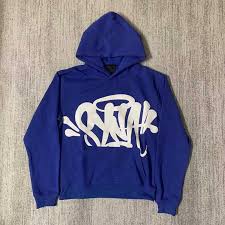The fashion industry is undergoing a quiet but profound transformation. For decades, its business model has relied on constant production, fast turnover, and consumer demand for the new. But as awareness of environmental impact grows, a different approach is taking hold — one that prioritises longevity, recycling, and responsibility. This is the essence of circular fashion: an industry model that aims to eliminate waste and keep materials in use for as long as possible.
Circular fashion challenges the idea that clothes are disposable. Instead of buying, wearing, and discarding, it encourages repair, reuse, and regeneration. From clothing rental schemes and resale platforms to thoughtful design and material innovation, the movement represents a new era of accountability in fashion — one that consumers and designers alike are starting to embrace. Simple, versatile garments like personalised t shirts or timeless basics are becoming part of this shift, embodying the idea that good design should endure rather than expire.
The problem with linear fashion
The current fashion system is largely linear: resources are extracted, turned into garments, and ultimately discarded. This cycle has resulted in enormous environmental costs. The production of textiles consumes vast quantities of water and energy, while synthetic fibres contribute to microplastic pollution in the world’s oceans.
Fast fashion — characterised by low-cost, high-volume production — has accelerated this impact. Clothes are designed and sold faster than ever before, often at the expense of quality, working conditions, and sustainability. In the UK alone, millions of tonnes of clothing are thrown away each year, much of it still wearable.
Circular fashion offers a way out of this pattern. By designing clothes that last, can be repaired, and eventually recycled, the industry can begin to break its dependency on constant consumption.
Design for longevity
The foundation of circular fashion lies in design. It starts with the question: how can a garment be made to last longer and have multiple lives? This means prioritising durable fabrics, timeless aesthetics, and construction techniques that allow for repair and reuse.
In practice, this could look like creating clothing with detachable components, reversible styles, or materials that can be easily recycled. Designers are also exploring biodegradable fabrics and dyeing processes that minimise environmental harm. The idea is to make clothing that’s adaptable — evolving with the wearer rather than being replaced by the next trend.
Even simple wardrobe staples can play a role in this shift. Choosing high-quality, versatile pieces such as personalised t shirts, classic jeans, or well-constructed knitwear supports a slower, more considered approach to dressing. By building wardrobes around durability and versatility, consumers reduce waste and the need for constant replacement.
Extending the life of clothing
One of the key principles of circular fashion is extending the lifespan of garments already in circulation. This can be achieved in several ways — through repairs, second-hand sales, swaps, or upcycling.
Repair culture is making a comeback, with community workshops and local tailors helping people mend rather than discard. Meanwhile, clothing rental and resale platforms have made it easier to give items a second or even third life. In this model, ownership is less important than use — a concept that aligns perfectly with the ethos of sustainability.
Businesses, too, are rethinking their roles. Some brands now offer “take-back” schemes, where customers can return old clothing for recycling or refurbishment. This approach keeps textiles in the loop and reduces the environmental burden of waste.
Technology and innovation driving change
Circular fashion isn’t just about philosophy — it’s also being driven by innovation. Advances in recycling technology are allowing fibres to be separated, regenerated, and reused in ways that were once impossible.
Chemical recycling, for example, can break down polyester and other synthetics into their raw materials, allowing them to be spun into new fabrics without losing quality. Similarly, mechanical recycling processes can turn old cotton garments into fresh yarns. These innovations are helping close the loop between production and reuse.
Digital tools are also playing a part. Blockchain technology is being used to trace supply chains, ensuring transparency and accountability. Meanwhile, digital passports for garments — essentially scannable tags — are emerging as a way to track a product’s origin, materials, and life cycle. This transparency gives consumers the power to make informed choices.
Shifting consumer behaviour
While technology and policy are essential, the success of circular fashion ultimately depends on people. The way consumers buy, use, and value their clothing will determine how sustainable the industry can become.
The shift towards circular fashion requires a mindset change: seeing clothes not as disposable but as long-term investments. This doesn’t mean abandoning style or self-expression — rather, it encourages a more thoughtful relationship with what we wear. It’s about buying less, choosing well, and looking after what we already own.
There’s also a growing appetite for authenticity and accountability. Consumers are increasingly drawn to companies that prioritise ethics, transparency, and sustainability. This cultural shift is driving demand for clothing that feels meaningful, well-made, and respectful of both people and the planet.
Policy and industry collaboration
Governments and organisations are beginning to recognise that systemic change in fashion requires collaboration across the entire supply chain. The UK and EU have introduced strategies to reduce textile waste and improve recycling infrastructure. Extended producer responsibility (EPR) schemes — which hold manufacturers accountable for the full lifecycle of their products — are gaining traction.
At the same time, industry coalitions are working to establish standards for sustainable materials and production methods. These collective efforts are helping to make circularity more achievable and measurable across the sector.
The future of circular fashion
Circular fashion represents more than a design trend; it’s a vision for the future of clothing. It invites everyone — from designers and retailers to consumers and policymakers — to participate in a shared goal: eliminating waste and valuing resources.
For individuals, it begins with simple choices. Investing in quality over quantity, caring for garments properly, and supporting circular initiatives all contribute to a healthier fashion ecosystem. Timeless, durable items — from personalised t shirts to outerwear built for years of wear — symbolise this new relationship with fashion.
The future of clothing will likely blend innovation with intention. As circular fashion continues to grow, it offers a hopeful model — one where creativity, sustainability, and longevity work together to redefine what it means to dress responsibly.












































































